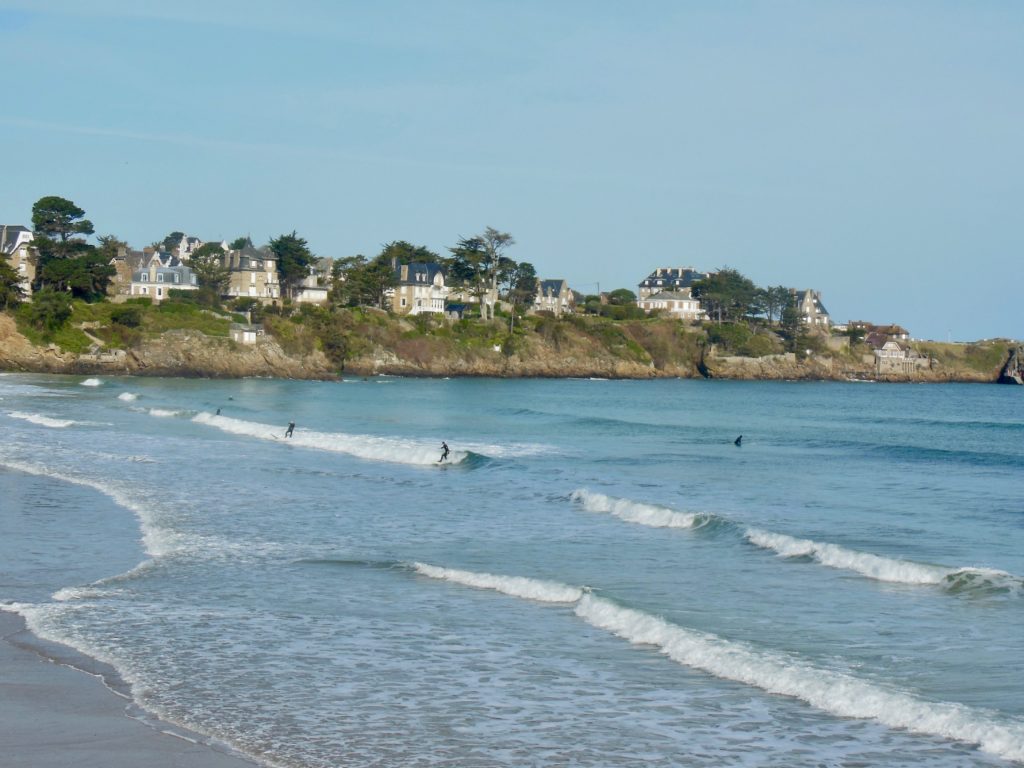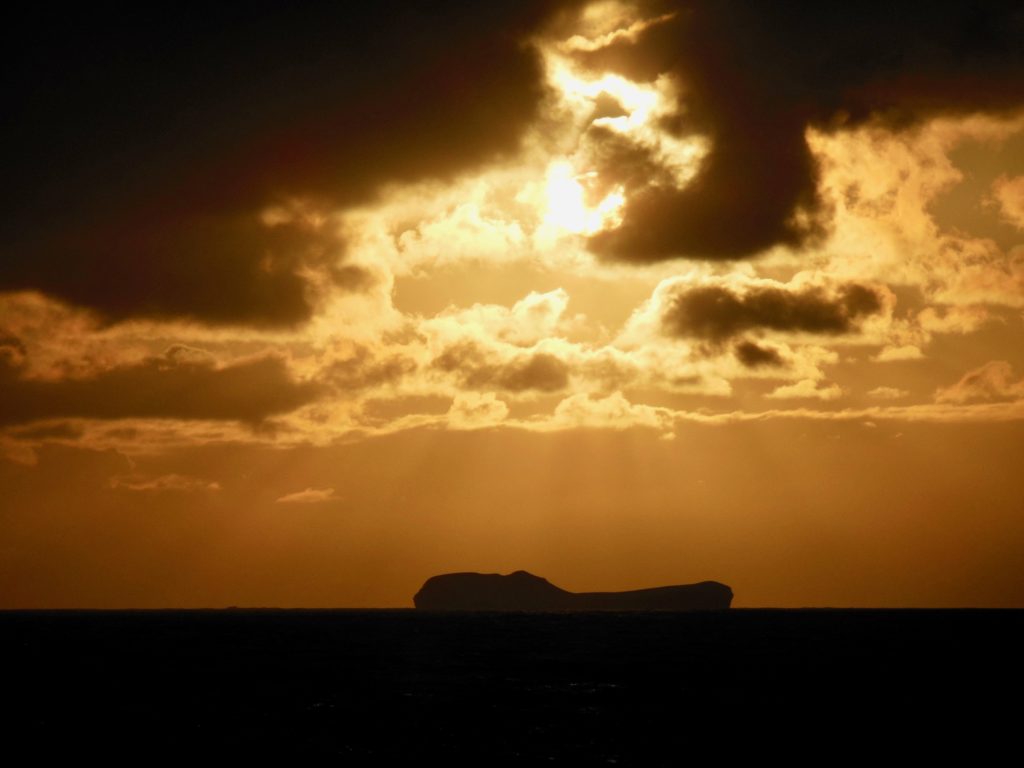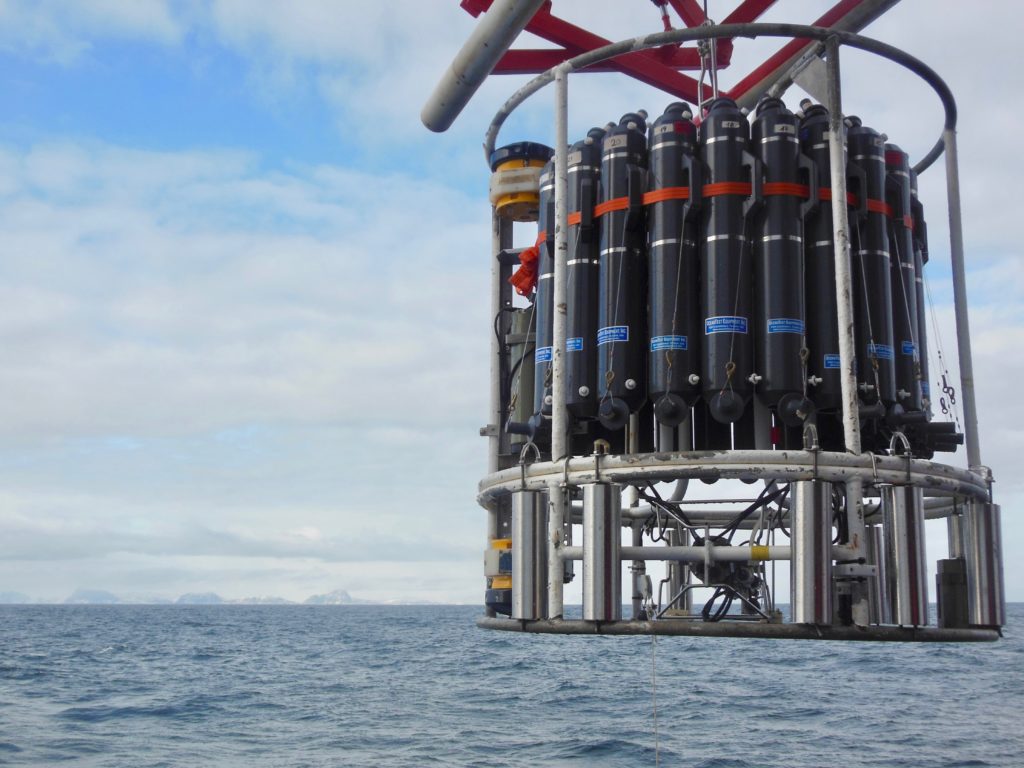By Charlène Feucher
The sea and the ocean have always held a fascination for me. I grew up in the bay of Saint-Malo (France) and the sea coast was my first playground (Figure 1). During my childhood, I was mostly interested in the processes involved in sandcastle destruction by waves, or in the tide processes that could not be ignored for safe crab fishing. When I was a little older (and braver), I started exploring the sea and left the beach and the rocks behind me. Sailing, surfing, windsurfing and kayaking became my favourite hobbies. Boat rides were always fun and exciting. Visiting traditional sailboats or big fishing vessels were captivating and it nourished my imagination and my dreams of sea adventures. I used to think: “One day, I will also be on a boat to explore the ocean and learn more about it!”.

I would later discover oceanographic sciences: the ocean was not only my playground anymore, it could now be my field work too! I was very glad to start a master in physical oceanography at the University of Brest (France) and learn the secrets of the ocean (with an affinity for the Atlantic Ocean), how it works, and why its role is of paramount importance to the global climate.
During my master studies, I got the opportunity to complete two projects that introduced me to physical oceanography research. My first internship was at IFREMER and IUEM (Brest, France) to evaluate realistic hydrodynamic simulations for biogeochemical applications. I developed inter- comparisons of several ocean simulations (differing in resolution and model parameters) and evaluated the simulated fields against relevant observation data sets, with a focus on mixed layer dynamics in the North Atlantic Ocean. I did a second internship at Woods Hole Oceanographic Institute. The project was to study the dissipation of the North Atlantic Subtropical Mode Water (also well known as Eighteen Degree Water) based on eddy-resolving ocean simulations. I examined the eddy covariance flux divergence of the North Atlantic Subtropical Mode Water thickness and potential vorticity to understand the spatial distribution and mechanisms of the destruction.
After my master thesis, I came back to the University of Brest to complete my PhD. The objective of my PhD project was to evaluate the properties and variability of the stratification in the North Atlantic subtropical gyre. I developed a method to characterize the properties of the stratification of the ocean (permanent pycnocline and mode waters) in subtropical gyres. Focusing on the North Atlantic subtropical gyre and based on the use of Argo data. I have documented the properties of subtropical mode waters and permanent pycnoclines.
Right after PhD, I travelled to Canada to start a postdoc at the University of Alberta (Edmonton) where I am still working. My postdoc research focuses on the relationship between the meridional overturning circulation and the formation of the Labrador Sea Water. This study is based on the use of NEMO model outputs with an Arctic and Northern Hemisphere Atlantic configuration.
In Edmonton, I am living far from the ocean but I never forget about it. The sea is always calling me and when cruise opportunities are out, I am willing to embark when possible. My first experience at sea was in 2015 during my PhD. We took several measurements along and across the Reykjanes Ridge to study the ocean circulation there. This first research cruise was full of discoveries. I learnt what oceanographic field is all about, how to take measurements, and how life aboard a ship feels like. I was enchanted by the immensity of the ocean and the power of the winds and waves during strong storms (small storms according to the Captain but I was not convinced).
I got the chance to renew this sea experience in June 2018 on board of the RV Maria S. Marian. This cruise was quite epic! We flew to Cadix (Spain) where the boat departed. We crossed the whole Atlantic while taking measurements, we docked in St. John’s (Canada) for a day and then we crossed the whole Labrador Sea before coming back to St. John’s where our cruise ended. Seven intense weeks at sea! During this cruise, I was amazed to see icebergs for the first time, admiring them drifting off the Greenland coast under a beautiful sunset (Figure 2). Performing CTD casts with the Greenland coast in the horizon was also a very special moment (Figure 3). And more importantly, I was glad to take measurements in the Labrador Sea to observe deep convection and compared these observed results with what we simulated in our NEMO model.

Figure 2: Sunset and iceberg, from the RV Maria S. Merian in June 2018. Photo by: Charlène Feucher.

Physical oceanography research work gives me the opportunity to work in different places and and meet many great people. This is full of very enriching experiences, professionally but also personally. I hope I can continue this oceanographic adventure in the years to come.
As this is the last blog post of 2018, it is time to leave you wishing everyone a wonderful Christmas season from a freezing cold and white Edmonton!

Pingback: Modelling in the Labrador Sea – OSNAP